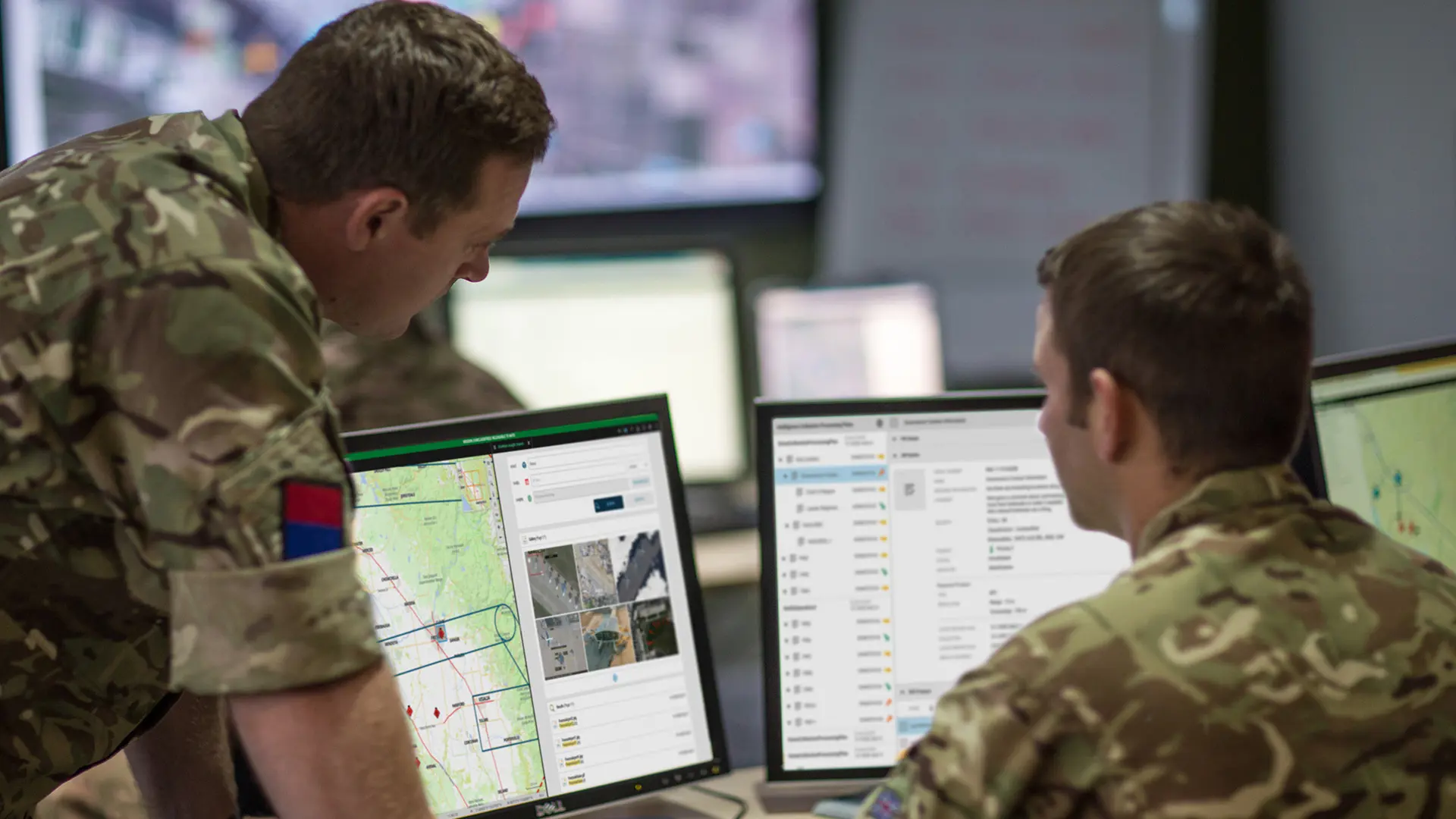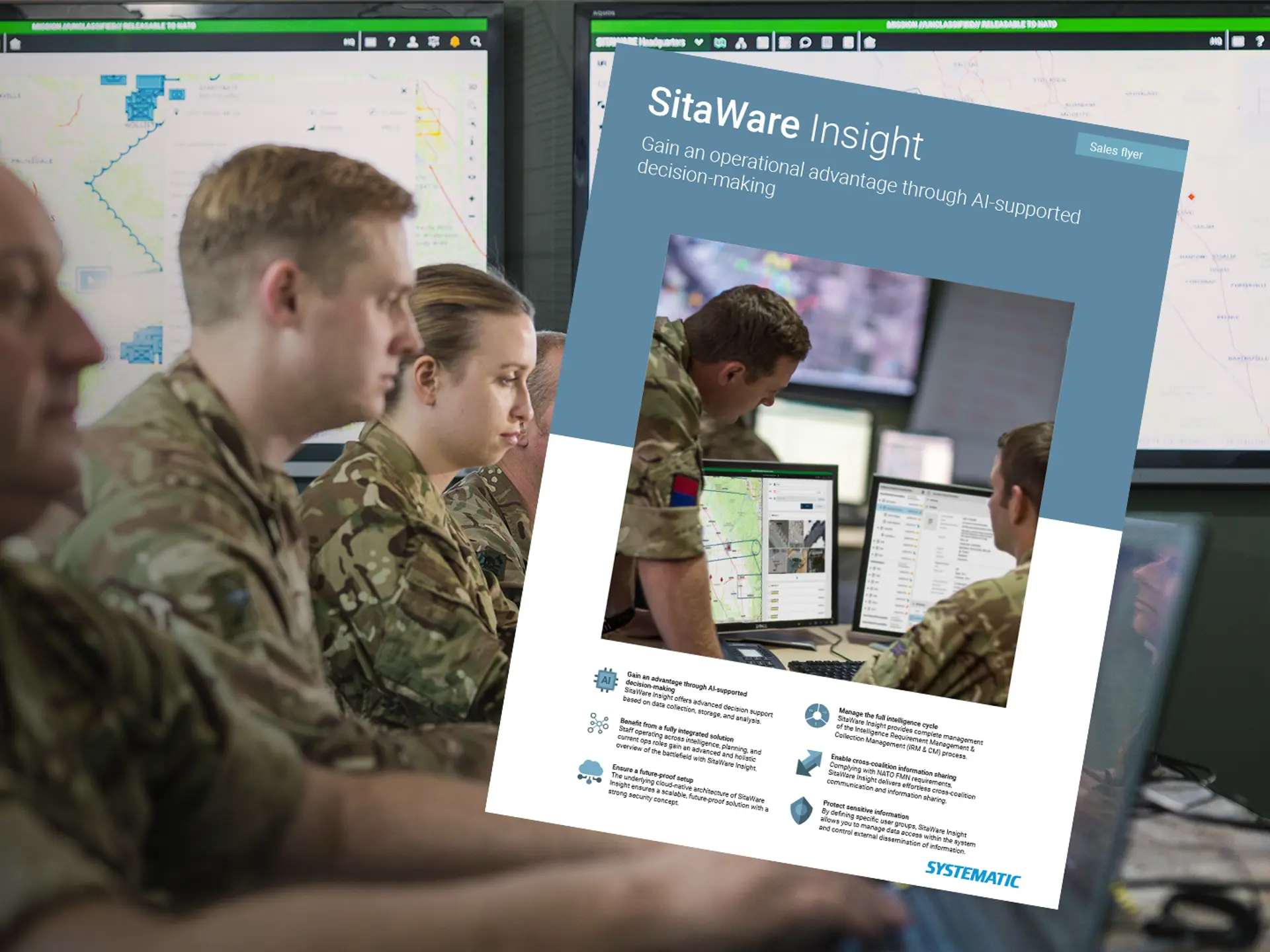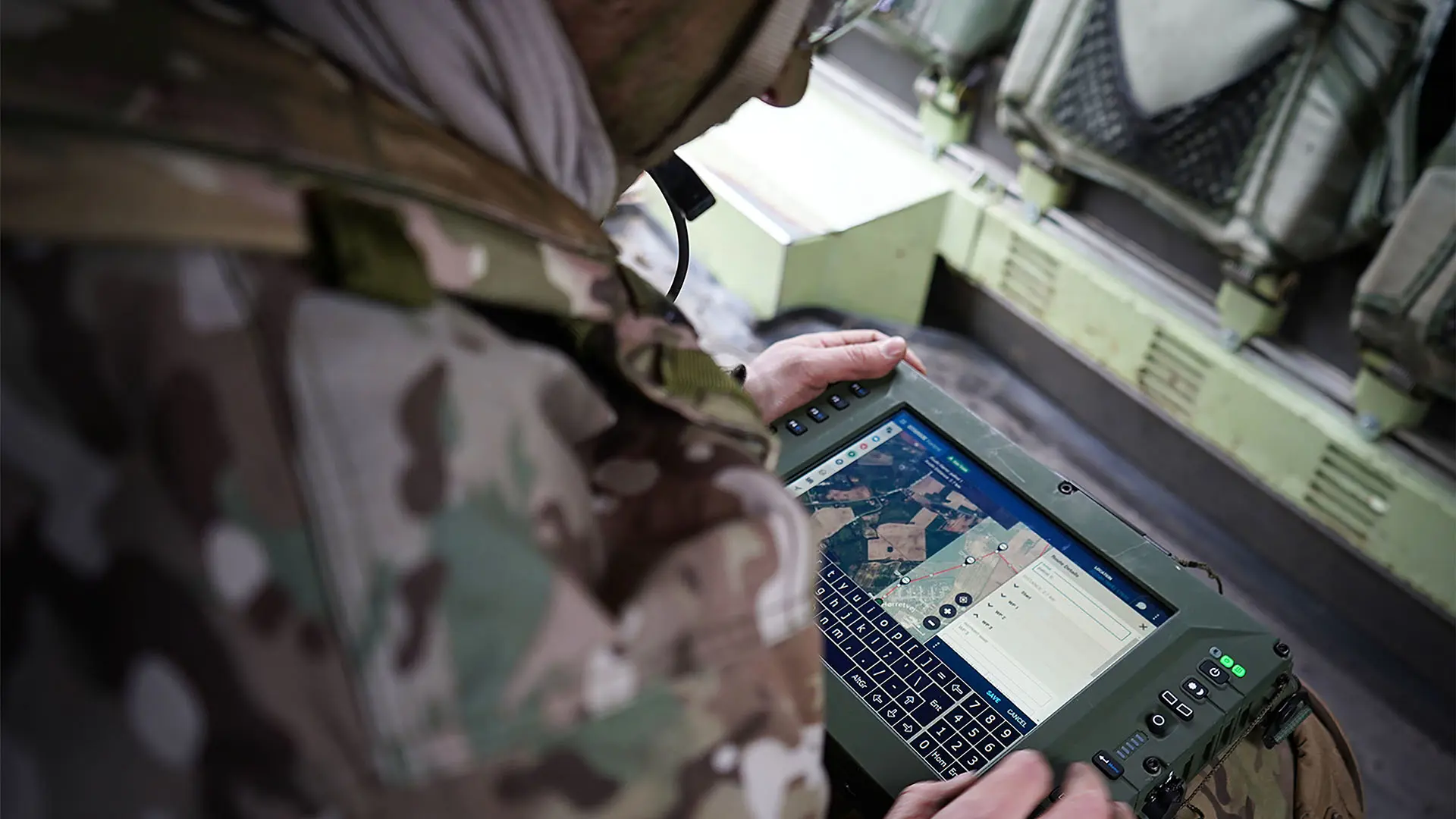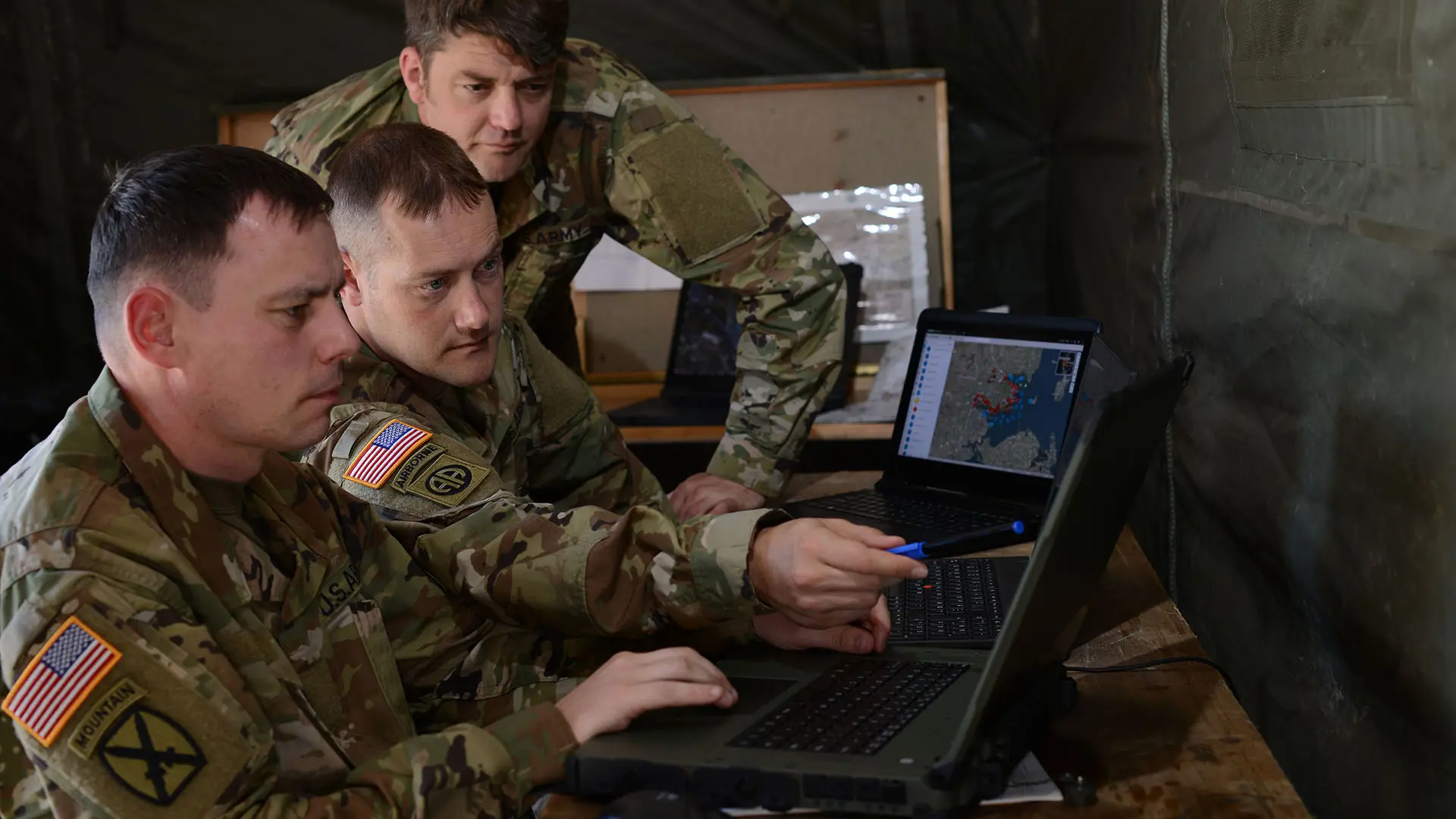
With the digitisation of the world around us, the ease with which content can be created and delivered continues to increase at pace. As a result, identifying important information from a sea of data can be a monumental undertaking, requiring more hours of processing than the outcome may justify.
While Artificial Intelligence (AI) is the answer, deploying the right tools within this technological domain is a critical part of ensuring that the right data is discovered. Natural language processing technology allows us to ensure that time-poor military staff can maximise the opportunities provided by text, audio recordings, and more to make informed critical decisions.

Natural language processing works by deploying an AI tool to examine documents, speech converted to text, and more – bringing structure to unstructured data. Language in its written or spoken form can contain high levels of ambiguity about its meaning when taken out of context, as particular arrangements of syntax or vocabulary can alter the intended meaning of a sentence. By processing these language items and moving them into structured content, they can then be used by intelligence analysts and others to enhance their situational awareness.
How we work with natural language processing
At Systematic, we deploy natural language processing as part of our SitaWare Insight intelligence product, helping intelligence analysts sift through large amounts of content to deliver insight rapidly into the planning cycle. As the need for transparency in the intelligence and planning process has increased, the requirement for distilling greater volumes of intelligence artefacts has correspondingly grown.
Structuring the unstructured
The increase in the utility of open-source intelligence (OSINT) on the battlefield means that numerous major data channels have become more useful for the battlefield commander. Media reporting, social media posts, public government reports, commercial data, and more can now be utilised to understanding the strength, capabilities, and composition of an opposing force, as well as location and disposition.
In deploying a natural language processing tool, intelligence staff and commanders can leverage the large volumes of data generated from these sources, account for semantic meaning and the use of informal language, and create verifiable analytical reports based on the appropriate evidence. In utilising a natural language processing tool, structure and metadata can be attributed to a datapoint, thereby increasing its utility to the overall operational picture.
Named entity recognition can also be utilised, with entities such as names, places, equipment, dates, and more extracted from an intelligence item, and then fed into a Recognised Intelligence Picture (RIP). This RIP can help improve situational awareness on the battlefield, as locations of units of interest are subsequently updated and synchronised with appropriate layers on the wider command map layer.
In deploying natural language processing technology on large volumes of data, the risk of falling victim to a sophisticated disinformation campaign is greatly reduced. Integrating supporting intelligence material into a map or plan helps those involved in a mission increase their situational awareness, understanding of the operational environment, and more.
Multi-lingual approaches
We deploy natural language processing technology within SitaWare Insight to help with the scanning and summary of long documents in multiple languages, with a concise summary provided for overview by commanders and intelligence staff. Covering linguistic nuances in a wide variety of languages helps to break down the barriers within the operational environment, allowing commanders to appreciate the complexity of their opposition and the civilian environment alike.
As a company with colleagues in numerous countries around the globe, we understand the importance of cross-cultural communications, nuances, and idioms. In deploying natural language processing, you can gain insights into idiomatic speech that may be lost when pure machine translation is used and improve your analysis of the environment you are operating in. This can support operations such as information warfare, civil-military co-operation, intelligence gathering, and more.
Understanding the full meaning behind the information driving your operations is vital; and helps to ensure your own messaging and approaches are appropriately deployed to maximum effect. As an operational enabler, natural language processing allows appropriate interaction with gathered intelligence and with those you work with on the ground, or in coalition with.










